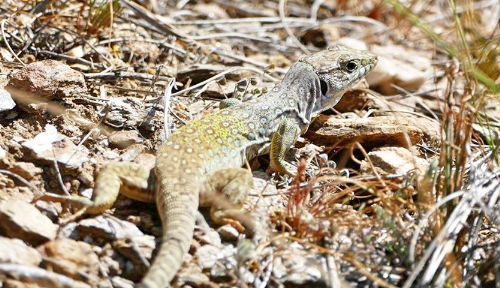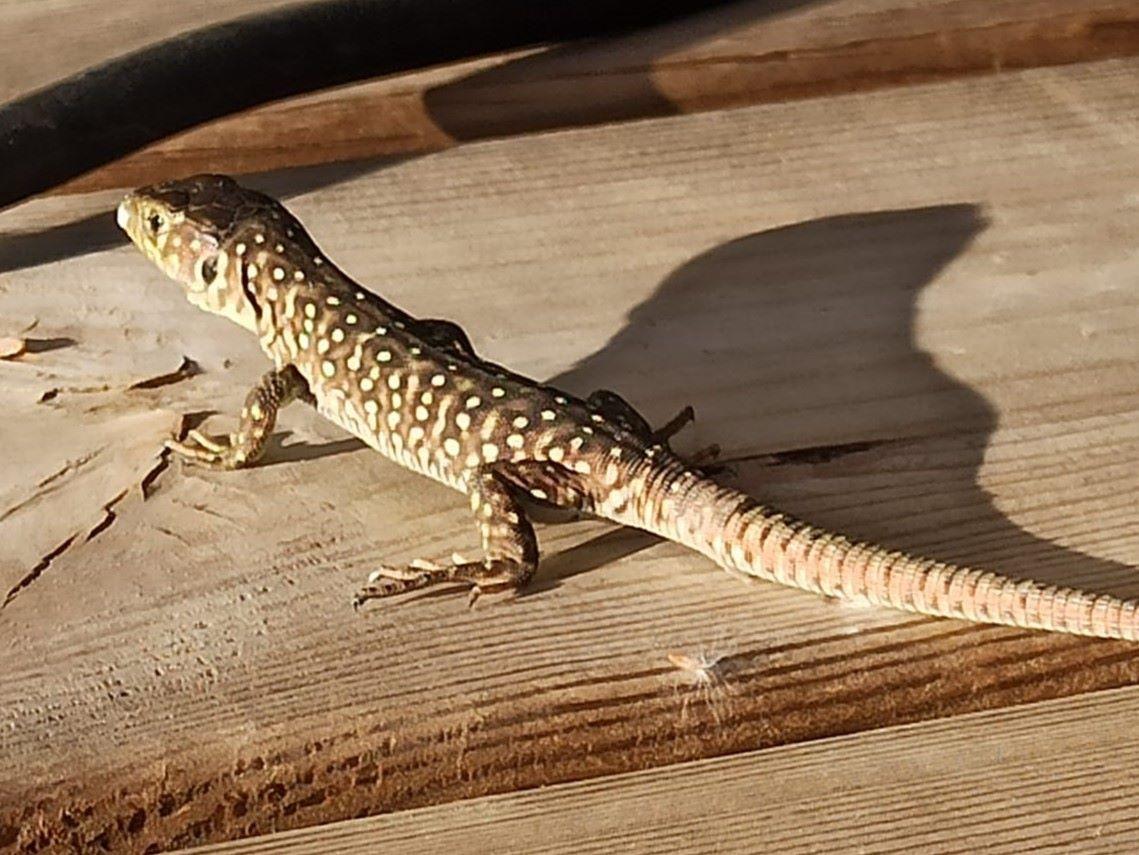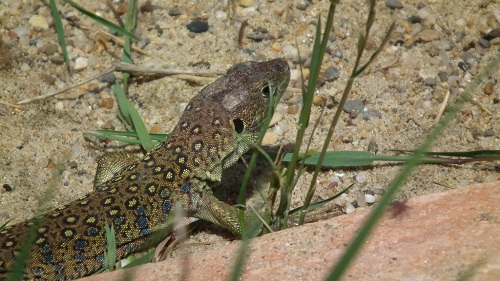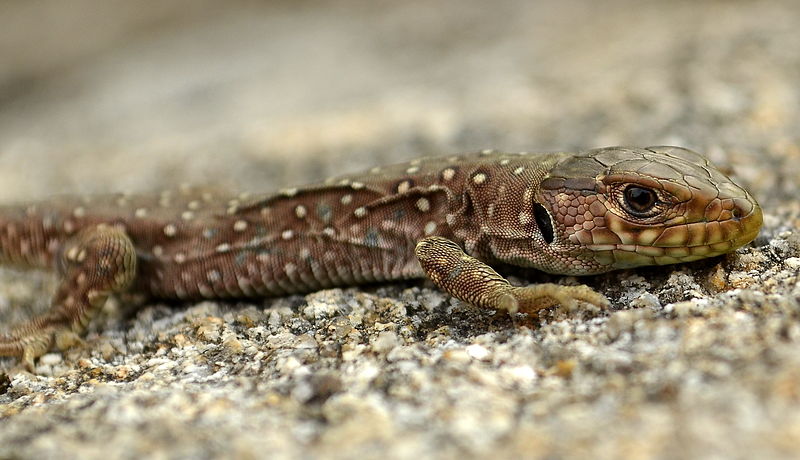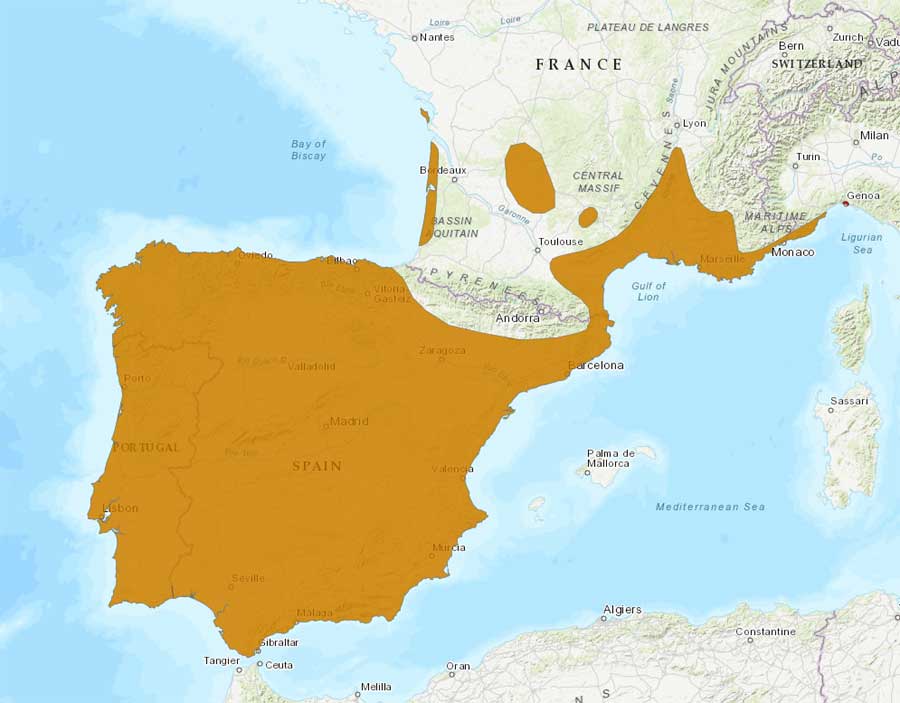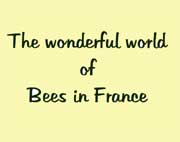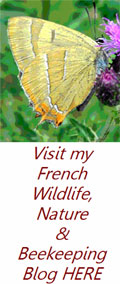Ocellated Lizard
Timon lepidus (Lacerta lepida)
Lézard ocellé
As the largest lizard in Europe
the adults of this species are easily recognised by their size, on average 40 to 60 centimetres, but can sometimes reach an impressive 90 centimetres in the southern Pyrenees, two thirds of the length being the tail. The legs, especially the hind legs, are thick and strong, with long curved, pointed claws. The sides, particularly during the breeding season, are decorated with blue spots, the back is patterned with a mixture of greens, browns, yellows and reds. The throat and belly, particularly the males, are yellow and their colouration increases with exposure to sunlight.
This lizard requires a hot climate
and is to be found throughout the south of France, and the south west to just north of Bordeaux, they prefer habitats that are open to the sun, rocky scrub, olive plantations, and grasslands, occasionally to be found in denser vegetation. They tend to stay in a fairly small territory, often in pairs and when disturbed they will quickly hide in a hole in the ground, under tree roots or under a large rock, Sometimes when threatened (or handled) they will bite savagely, which although normally harmless could be painful.
Reproduction doesn’t occur until late spring or early summer, often accompanied by violent fights between males, eggs, 5 to 12, being deposited between June and July in the ground. The incubation period is about 3 months and it would be unusual to see the young, which are about 10 centimetres when first hatched, before September.
